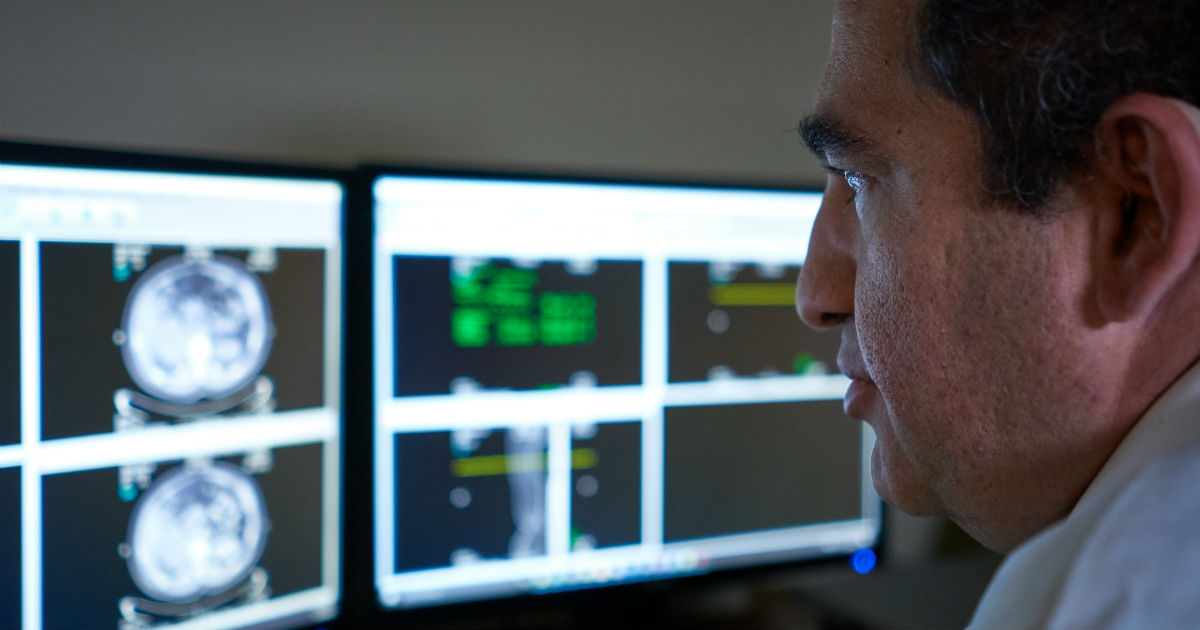
For many patients, a cancer diagnosis requires immediate action. Treatment options must be weighed, appointments need to be made. But for some men diagnosed with early-stage, localized prostate cancer, immediate treatment may be put off while the cancer is still slow-growing. Instead of aggressive treatment, many of these patients are put on active surveillance. This monitoring program requires no other treatments, such as surgery or radiation therapy, but it does require that the doctor monitor the growth and other changes in the disease, continuing to evaluate whether and when further treatment may be necessary.
In other words, vigilance is key. But a recent survey conducted by the University of North Carolina School of Medicine found that very few of the participants on active surveillance complied with monitoring guidelines in the long-term. This lapse in protocol puts some men at higher risk, allowing the cancer to advance without detection and, in some cases, requiring immediate, potentially invasive treatment.
What is prostate cancer?
The prostate is a walnut-sized gland situated between the bladder and the urethra in men. It secretes fluid, which combined with fluids from other glands, creates semen. Both urine and semen pass through the prostate on their way out of the penis. Prostate cancer is the third most common cancer in the United States, behind breast and lung cancer. About 175,000 cases of the disease are diagnosed each year, which accounts for about 10 percent of all cancers.
But most prostate cancer treatments often produce positive outcomes. Statistics show that the disease is highly treatable, especially for the majority of patients—men diagnosed before the cancer has spread beyond the prostate. National Cancer Institute data indicates that the five-year survival rate for men diagnosed with early stage prostate cancer is 98 percent. Ninety percent of all cases are diagnosed while the cancer has been contained to the prostate. And because many prostate cancer cells are slow growing, most men do not experience symptoms.
For those who qualify for active surveillance, the National Comprehensive Cancer Network (NCCN) guidelines call for them to receive periodic tests, including:
- Prostate specific antigen (PSA) tests
- Digital rectal examinations (DRE)
- Biopsies
Tests may be required every year or two years. Anomalies detected during a DRE or biopsy or changes in PSA levels may prompt the patient’s urologist to discontinue active surveillance and recommend treatment options such as surgery or radiation therapy.
“We explain the risks and benefits of active surveillance and go through the guidelines at every discussion,” says Farshid Sadeghi, MD, Medical Director of the Genitourinary Center at our hospital in Phoenix. “We talk about the risks of cancer progression if the patient does not follow up. We also have processes in place to make sure that the patient comes back for his follow-up visit.”
Failing to follow through
Still, the survey by University of North Carolina School of Medicine showed that participation among active surveillance patients ebbed over time. According to the survey of nearly 350 patients:
- 67 percent got a required PSA test in the first six months of active surveillance
- 35 percent received a required biopsy 18 months into the program
- 15 percent complied with all active surveillance guidelines
“My experience is that some patients get false reassurance in that their original biopsy shows very little cancer and they’re basically told that this cancer does not warrant treatment,” Dr. Sadeghi says. “The correct answer is that the cancer does not warrant treatment at this time, but things do change.”
In some cases, Dr. Sadeghi says, a patient on active surveillance may have been underdiagnosed and his cancer is more aggressive than previously thought. It’s important, he says, to get an accurate diagnosis and even consider a second opinion to determine whether active surveillance is appropriate. Active surveillance is a valuable tool in the treatment of prostate cancer. It may help men avoid unnecessary surgeries and other treatments that often cause side effects. According to NCCN, about 66 percent of men on active surveillance are able to avoid treatments such as surgery. The key, Dr. Sadeghi says, is attentiveness on the part of the patients and good communication by medical professionals on the need to stay on the program. “Keeping the active in the term ‘active surveillance’ requires better patient education and vigilance,” Dr. Sadeghi says.

